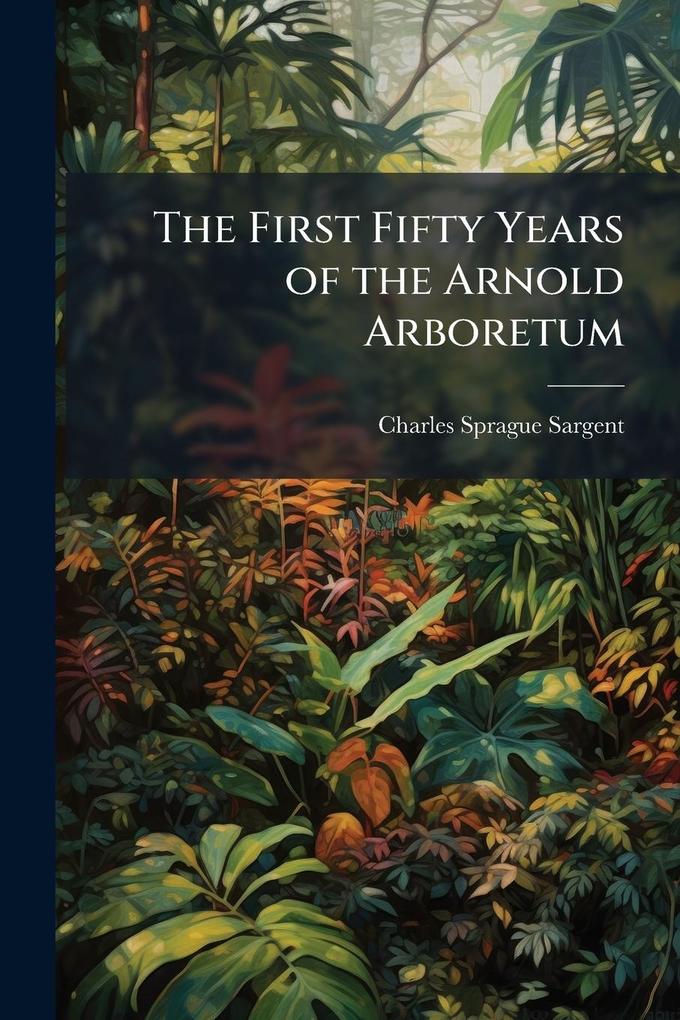
Zustellung: Mo, 21.07. - Fr, 25.07.
Versand in 2 Wochen
VersandkostenfreiBestellen & in Filiale abholen:
"The First Fifty Years of the Arnold Arboretum" chronicles the formative years of one of the world's leading centers for the study of plants. Founded in 1872 as part of Harvard University, the Arnold Arboretum quickly became a vital resource for botanical research, horticultural innovation, and public education. This volume, written by Charles Sprague Sargent, the Arboretum's first director, provides an in-depth look at the institution's early history, detailing its establishment, development, and contributions to the field of botany.
Sargent meticulously documents the Arboretum's expeditions, plant acquisitions, and the growth of its living collections. He highlights the challenges and triumphs of creating a world-class botanical garden in the heart of Boston. This historical account is essential reading for anyone interested in the history of botany, horticulture, and the development of American scientific institutions. It offers valuable insights into the vision and dedication that shaped the Arnold Arboretum into the renowned institution it is today.
This work has been selected by scholars as being culturally important, and is part of the knowledge base of civilization as we know it. This work was reproduced from the original artifact, and remains as true to the original work as possible. Therefore, you will see the original copyright references, library stamps (as most of these works have been housed in our most important libraries around the world), and other notations in the work.
This work is in the public domain in the United States of America, and possibly other nations. Within the United States, you may freely copy and distribute this work, as no entity (individual or corporate) has a copyright on the body of the work.
As a reproduction of a historical artifact, this work may contain missing or blurred pages, poor pictures, errant marks, etc. Scholars believe, and we concur, that this work is important enough to be preserved, reproduced, and made generally available to the public. We appreciate your support of the preservation process, and thank you for being an important part of keeping this knowledge alive and relevant.
Sargent meticulously documents the Arboretum's expeditions, plant acquisitions, and the growth of its living collections. He highlights the challenges and triumphs of creating a world-class botanical garden in the heart of Boston. This historical account is essential reading for anyone interested in the history of botany, horticulture, and the development of American scientific institutions. It offers valuable insights into the vision and dedication that shaped the Arnold Arboretum into the renowned institution it is today.
This work has been selected by scholars as being culturally important, and is part of the knowledge base of civilization as we know it. This work was reproduced from the original artifact, and remains as true to the original work as possible. Therefore, you will see the original copyright references, library stamps (as most of these works have been housed in our most important libraries around the world), and other notations in the work.
This work is in the public domain in the United States of America, and possibly other nations. Within the United States, you may freely copy and distribute this work, as no entity (individual or corporate) has a copyright on the body of the work.
As a reproduction of a historical artifact, this work may contain missing or blurred pages, poor pictures, errant marks, etc. Scholars believe, and we concur, that this work is important enough to be preserved, reproduced, and made generally available to the public. We appreciate your support of the preservation process, and thank you for being an important part of keeping this knowledge alive and relevant.
Produktdetails
Erscheinungsdatum
22. Mai 2025
Sprache
englisch
Seitenanzahl
48
Autor/Autorin
Charles Sprague Sargent
Verlag/Hersteller
Produktart
kartoniert
Gewicht
82 g
Größe (L/B/H)
234/156/3 mm
ISBN
9781024113402
Bewertungen
0 Bewertungen
Es wurden noch keine Bewertungen abgegeben. Schreiben Sie die erste Bewertung zu "The First Fifty Years of the Arnold Arboretum" und helfen Sie damit anderen bei der Kaufentscheidung.









